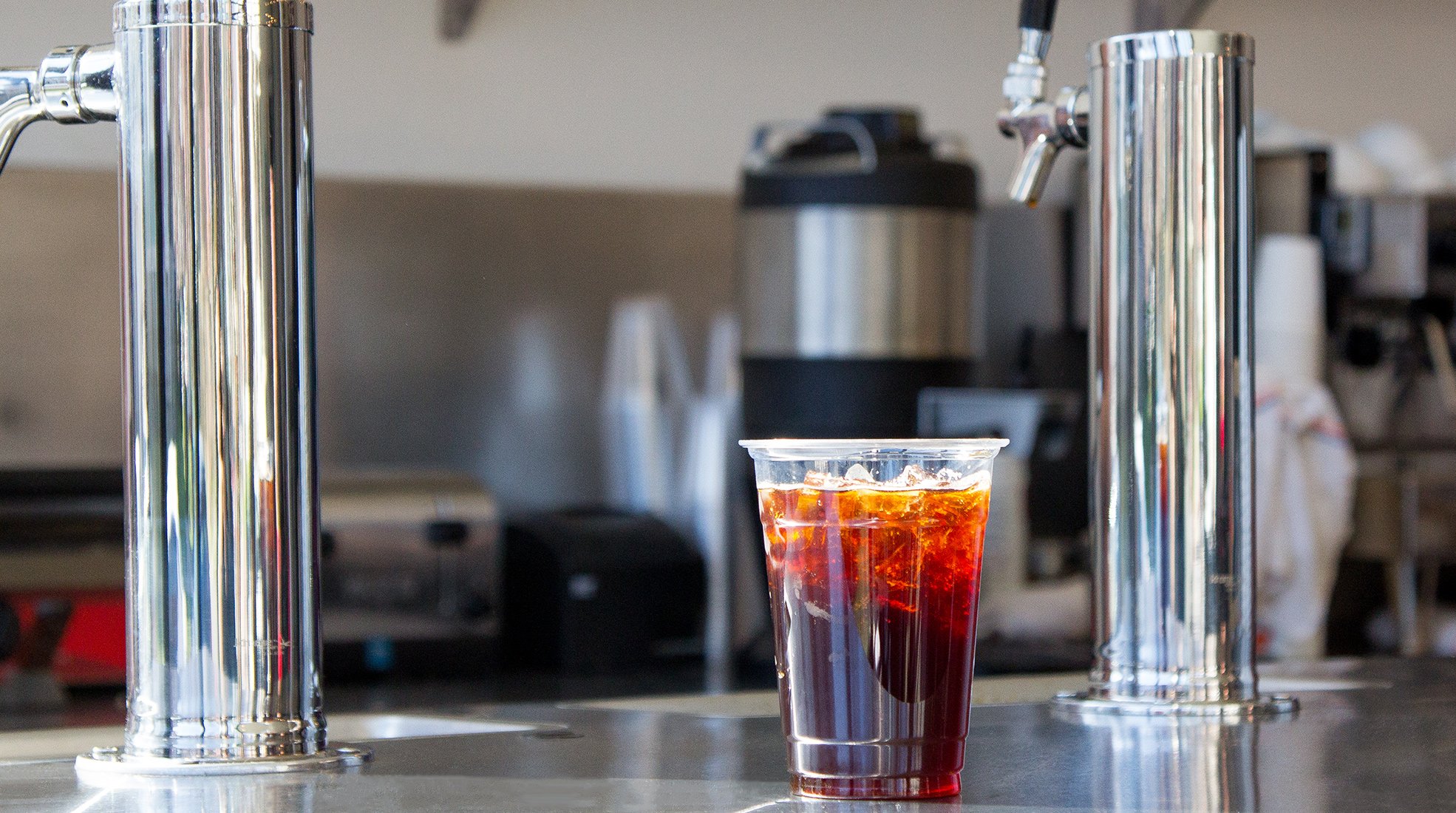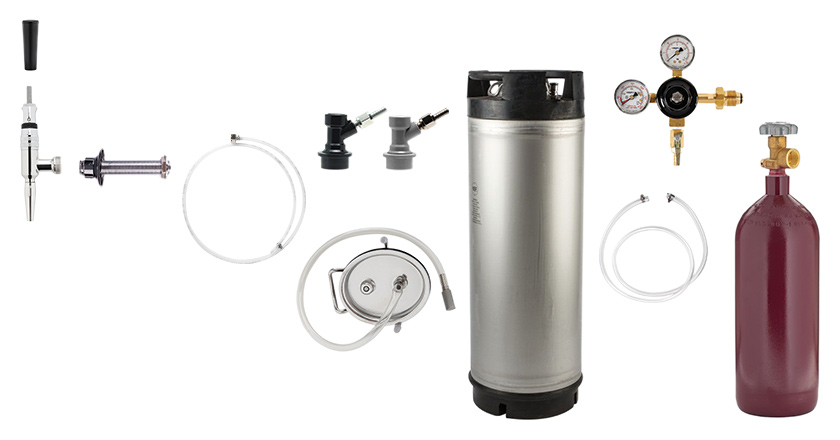
Cold brew coffee is hot right now. From Starbucks to local coffee houses, it seems like everyone is selling cold brew coffee.
Serving cold brew coffee on tap will make your establishment stand out from the crowd. Instead of pouring from messy pitchers, just fill a keg with your cold brew coffee and then serve your customers a delicious cup poured from your kegerator or draft system. Take that experience up a notch when you infuse it with nitrogen to create swirling, creamy pints that deliver a creamy treat they will love. Read on to find out how easy it is to start pouring coffee on tap using a draft system.
Cold brew coffee is hot right now. From Starbucks to local coffee houses, it seems like everyone is selling cold brew coffee.
Serving cold brew coffee on tap will make your establishment stand out from the crowd. Instead of pouring from messy pitchers, just fill a keg with your cold brew coffee and then serve your customers a delicious cup poured from your kegerator or draft system. Take that experience up a notch when you infuse it with nitrogen to create swirling, creamy pints that deliver a creamy treat they will love. Read on to find out how easy it is to start pouring coffee on tap using a draft system.
Draft systems restrict coffee’s contact with air, thereby slowing the oxygenation process that degrades coffee’s volatile flavor compounds. Less exposure to oxygen means your coffee stays fresher, longer.
Kegging your cold brew allows you to make and serve large batches quickly and easily. With the simple pull of a tap handle, it goes from keg to glass to your thirsty customers’ hands.
With the right pressure and faucet, you can choose to serve your cold brew “nitro” style. When nitrogen is pushed into the coffee, it creates a rich, velvety texture and creamy head that is very much in demand among coffee consumers.
A draft system that dispenses coffee generates buzz that attracts people to your business.

Optional Equipment
There are two primary setup options for serving coffee on tap.
Nitrogen can be used under low pressure to serve standard cold brew or under high pressure to create the creamy head and texture of nitro coffee.
For low-pressure pours with a standard faucet, set the PSI in the 6-8 range. You might adjust slightly below or above this range to change the speed of your pour.
Higher pressure is required to serve nitro cold brew. Exact PSI can vary widely depending on your altitude, serving temperature, distance from keg to faucet, and desired effect, so you will have to experiment. Using a keg carbonation lid, slowly raise the pressure in 5 PSI increments (just around 20 minutes) until reaching a 35-45 PSI serving pressure to create a cascading effect and foamy head atop your glass of cold brew.
We recommend using 100% nitrogen for draft coffee. If you use carbon dioxide or a combination of carbon dioxide and nitrogen, it will carbonate the coffee over time, which is not ideal. Not only do bubbles change the mouthfeel, they also introduce carbonic acid to the coffee, which will alter its flavor. Nitrogen is not as soluble, so it will not affect coffee in the same way.


Have questions about your unique program or setup? Give our draft specialists a call at 1.888.415.2803 or fill out the form below.
Order before 2:00 pm EST
No Restocking Fees
Through SSL Protection
Call 877.636.3673